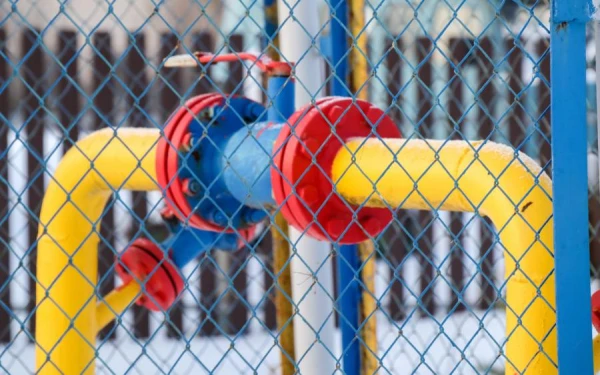
According to high greenhouse gas emission scenarios, the Atlantic Meridional Overturning Circulation (AMOC) — an important ocean current system that includes the Gulf Stream — could completely stop after 2100.
This conclusion was reached by scientists in a new study involving the Potsdam Institute for Climate Impact Research (PIK). The scenario of AMOC (Atlantic Meridional Overturning Circulation) shutdown means the cessation of heat transfer by the ocean to the north, which could lead to summer droughts and harsh winters in Northwestern Europe, as well as changes in tropical precipitation zones, reports ScienceDaily.com.
"Most climate forecasts end in the year 2100. But some standard IPCC (Intergovernmental Panel on Climate Change) models have now been extended several centuries into the future — and the results are extremely alarming," explained Sibren Drijfhout, a representative of the Royal Netherlands Meteorological Institute and lead author of the study.
"Deep circulation in the North Atlantic is expected to significantly slow down by 2100 and then completely stop in all high-emission scenarios, as well as in some medium and low-emission scenarios. This indicates that the risk of shutting down this system is much more serious than previously thought."
The Collapse of Deep Convection in Winter — A Point of No Return
AMOC transports sun-warmed tropical water northward across the ocean surface and sends cold, denser water back southward into its depths. This "conveyor" helps Europe maintain a relatively mild climate and influences weather patterns worldwide. In models, the "tipping point" leading to the collapse of AMOC is the winter collapse of deep convection in the Labrador, Irminger, and Norwegian Seas.
Global warming reduces heat loss from the ocean in winter, as the atmosphere becomes warmer and no longer cools the water sufficiently. This weakens the vertical mixing of water: the surface remains warm and light, so the water no longer sinks and mixes with the deeper layers. As a result, AMOC weakens, and less warm salty water flows northward.
In northern regions, surface waters become colder and less salty, making them even lighter — and they sink even less frequently. This creates a self-reinforcing feedback loop driven by atmospheric warming and increased ocean freshening.
"In models, this tipping point in key North Atlantic seas occurs within the next few decades, and this is extremely concerning," noted Stefan Rahmstorf, head of the Earth System Analysis Department at the Potsdam Institute and co-author of the study.
Once this point is reached, the collapse of AMOC becomes inevitable due to the self-reinforcing feedback. According to the study's data, the amount of heat that the North Atlantic transfers to the atmosphere decreases to less than 20% of the current level, and in some models, nearly to zero.
Lead author Sibren Drijfhout added: "Observations from the last five to ten years in these deep convection regions already show a downward trend. This may be natural variability, but it aligns with model predictions."
It Is Extremely Important to Reduce Emissions as Soon as Possible
To obtain these results, the research team analyzed CMIP6 (Coupled Model Intercomparison Project) simulations used in the latest IPCC report, extending the time frame to 2300–2500.
In all nine high-emission models, a weakening of circulation to a weak, shallow state was observed, where the deep flow completely stopped; a similar result was recorded in some medium and low-emission scenarios. In all cases, the changes followed the collapse of deep convection in the North Atlantic seas, occurring around mid-century.
"A sharp weakening and subsequent collapse of this ocean current system would have severe consequences worldwide," emphasizes PIK researcher Stefan Rahmstorf. "In the models, the current completely stops 50–100 years after the tipping point is reached. However, these results may underestimate the real risk, as standard models do not account for the additional influx of fresh water from melting Greenland glaciers, which is likely to have an even greater impact on the system. Therefore, it is extremely important to reduce emissions as soon as possible — this will significantly lower the risk of AMOC collapse, even if it is no longer possible to completely rule it out."













Leave a comment